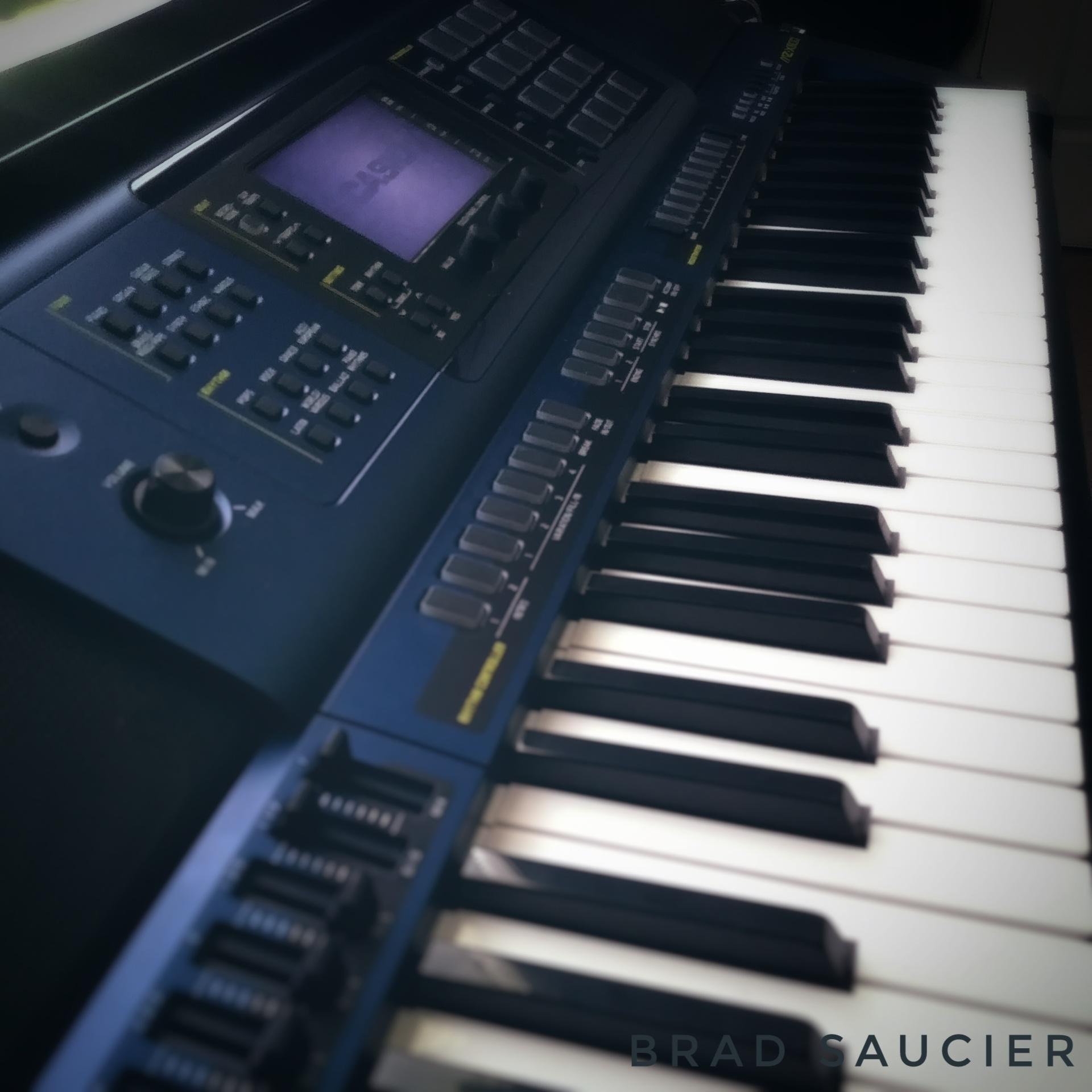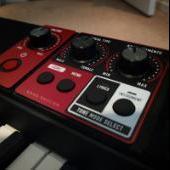-
Posts
8,722 -
Joined
-
Last visited
Content Type
Profiles
Forums
Downloads
Posts posted by Brad Saucier
-
-
Yes, once you save your accomp volume setting in a registration, it can be recalled at any time. To use your custom accomp volume for ALL rhythms, simply select your stored registration and choose any rhythm. If you have other registrations stored with different accomp volume levels, you will need to update each registration with your desired setting.
Keep in mind you can use any registration as a template to create other new registrations by simply selecting a registration, updating any settings you want to change, then storing it in another location.
-
A preset DSP effect can contain up to 4 modules. This forms an effects chain. Each module is a specific effect algorithm. For example "phaser + EQ".
You can edit any preset tone and select any DSP effect chain from any other preset tone and save that as a new user tone. What you can't do is mix and match "modules" from different DSP effects chains. If you found the amp sim you like in a chain, you can use that chain for any tone and save it as a user tone.
-
Just to update this, it was solved. The original poster asked this question in the Facebook group where he solved it by cleaning the sliders and knobs. Judging from his statement that he is simply using this as a piano 90% of the time, I suspected the sliders and knobs are rarely used, if ever, which could lead to erratic operation. This is simply how any potentiometer behaves with age, certain environmental conditions and lack of use. I always suggest simply turning the knobs, sliding the sliders, and turning the wheels occasionally. They can clean themselves and remain in good condition.
-
 1
1
-
-
1 hour ago, Tommy TJ said:
Unfortunately that does NOT change the volume for the presets at their original locations.
I would like to adjust the volume of ALL of the preset rhythm/accompaniments.
"At their original locations" is not how it works, but this does indeed adjust volume level for all rhythms.
"AccompVol" as mentioned above, adjusts volume level of the accompaniment playback system. AccompVol level is stored in memory by the "Auto Resume" function, or by storing as a Registration Setup. If Auto Resume is not turned ON and the keyboard is turned OFF, or a different Registration is selected, AccompVol will reset to default. As long as AccompVol does not reset to default, any rhythm selected will playback at the configured volume level. I suspect you are changing Registrations or turning off the keyboard with Auto Resume turned off.
-
32 minutes ago, DavidT said:
My same question. I want to run my CPD-S360 to an amplifier in mono mode. The output only has a stereo mini plug? I was surprised.
That is a different question. "Mono" means something different in this topic. "Mono mode" is a synthesizer function where the keyboard is not polyphonic (only 1 note can sound at any given time). It is used as a performance tool.
"Mono" sound (not stereo), can be taken from the stereo phones output. Casio keyboards are designed to work very well with only the left or right output in use. A stereo splitter cable can be used if desired.
-
Yes, it works very similar to an audio mixer. And yes, the firmware update allows MIDI port A to be addressed, the first 3 channels of which are the 3 main keyboard performance parts (upper and lower parts).
-
System Effects: This is a collection of 3 effects generators. All parts can share these effects. These are reverb, chorus and delay. Each part in the CT-S1000V has 3 adjustable system effects sends. These allow a customized mix to be sent to each effect generator.
Active DSP is only for individual parts. A single DSP effect can't be shared with another part. Maximum of 2 upper or lower keyboard parts can run an active DSP effect at the same time.
-
EQ is the only master effect. "Standard" is the default setting, which I would consider to be the "off" setting. Since it's a master effect, it applies to the main stereo output. It's not an effect for individual parts. Insert effects called Active DSP is available for individual parts.
The sound engine is mixed and output as an analog stereo signal. It's not possible to record individual keyboard parts as different audio channels simultaneously outside of what's possible with the analog stereo output.
-
3 minutes ago, rakesh poothamkara said:
Please anybody suggest a otg cable for Casiotone cts300
USB Micro Type B to USB Type A data transmission cable.
-
Sliders and knobs like this are self cleaning, but they have to be used occasionally in order to do so. It's true for any potentiometer. If corrosion and dirt begins to build, they can cause noisy erratic signals, even while idle, which would cause settings to change. I would start by simply sliding the sliders fully a bunch of times, same for turning the knobs.
-
Wait, do you mean the notes are inverted on the keys? Or just the pan position of the layers are flip flopped left and right?
-
4 minutes ago, Izayah Archuleta said:
I have a ctk-2090 that I was gifted from a friend. Does anybody know what driver I need in order to use it or if this device is midi compatible in the ableton DAW at all?
CTK-2090 is a plug and play USB MIDI controller. It will install automatically when connected and show up as "Casio USB MIDI" device.
-
6 hours ago, Shaunaflynn said:
Thank you for sharing.
Did you forget we were having a conversation in another thread?
-
The clean Fender Strat sound, which is found in preset tones usually called "clean guitar". You may want to play with reverb depth by editing the tone or mixer settings. Add some vibrato while playing using the modulation button and combine that with well placed pitch bends with the wheel.
-
 1
1
-
-
I don't know of a way to do that.
-
Just to be clear, this is an independent user forum. Casio is not able to respond to service requests here. They have a service contact page as posted above. Each region of the world has their own unique contact page. You'll need to search the web for Casio support in your region.
Casio support covers these under warranty for a period of time. This is done by contacting your original Casio dealer first, and then Casio support if the dealer is not able to assist. After warranty has expired, any qualified service tech can offer assistance and repairs.
Unfortunately power issues are either a faulty power supply (the AC adapter or the outlet itself), or a fault in the instrument (buttons or circuits). It's difficult to help diagnose and repair these things through a user forum. If a DIY solution is desired, you'll need to know something about diagnostics and repairs.
-
"Beat Buddy" is something designed specifically for guitar players in mind. I don't have experience with them personally, but I have a friend with one and it seems useful for foot operated drum beats.
-
How are you recording your music? The keyboard should not be recorded with microphones. Is this your first weighted hammer action keyboard? All hammer actions make some noise. It's completely normal. These in particular are some of the quietest ones made.
-
 1
1
-
-
Hmm, that's an ambitious task for the PX-5S since it's not designed to be an arranger keyboard. What's it is designed to do is record and playback short phrases you can trigger by pressing keys. Pressing the keys can also transpose the phrase up or down from the original key it was recorded. Phrases can loop up to 16 measures and a up to 4 phrases can be layered using all 4 zones together. I would suggest recording, saving and assigning to zones any phrases you need. Practice triggering the phrases, performing playback of them by triggering them from the keys. Once you're happy, record the performance as an audio file to the USB flash drive. Use that as your backing track to practice along with.
-
The PX-110 resets when the power is off.
-
If you simply rename the song using song edit, rename, exit and turn off the keyboard, does the name stick when you return to that song next time?
-
That's good to hear you have found a device capable of running the app properly. Sometimes a mobile device may not have enough memory, or the version of software may not be compatible. Unfortunately Android phones often suffer from lack of updates by their manufacturers.
Songs built into the app may not be extracted, so I would not expect it is possible.
As far as Casio support, who did you contact specifically? We are helping you here. Casio helps support this site in order to help you.
-
 1
1
-
-
34 minutes ago, rendoman said:
I don't think I will buy anything from this brand in the future if this is the assistance is null. Hope to find a resolution to problem searching files in folder.
Searching files in folder? I'm not sure what you mean. This topic is about left and right hand assignments for MIDI files.
Note: This site is a part of Casio support. We are an independent community that would not exist if Casio was not supportive in our efforts here. They know we are here and support what we do in order to help users.
-
I'm not sure anyone other than a technician can help with this one. Unfortunately I don't have any suggestions beyond that.



Play multiple tones simultaneously via Midi
in General CT-S1000V and CT-S500 Discussion
Posted
The update allows MIDI input to access Port A, Parts 1 through 5, previously not accessible. Port A is keyboard performance parts, such as upper and lower tones. Port A is necessary to use DSP tones (and lyric tones on the 1000V). DSP tones can be selected as upper or lower tones. The MIDI Port setting only changes input routing of channels 1 through 5. Port C is still used for MIDI channels 6 through 16.